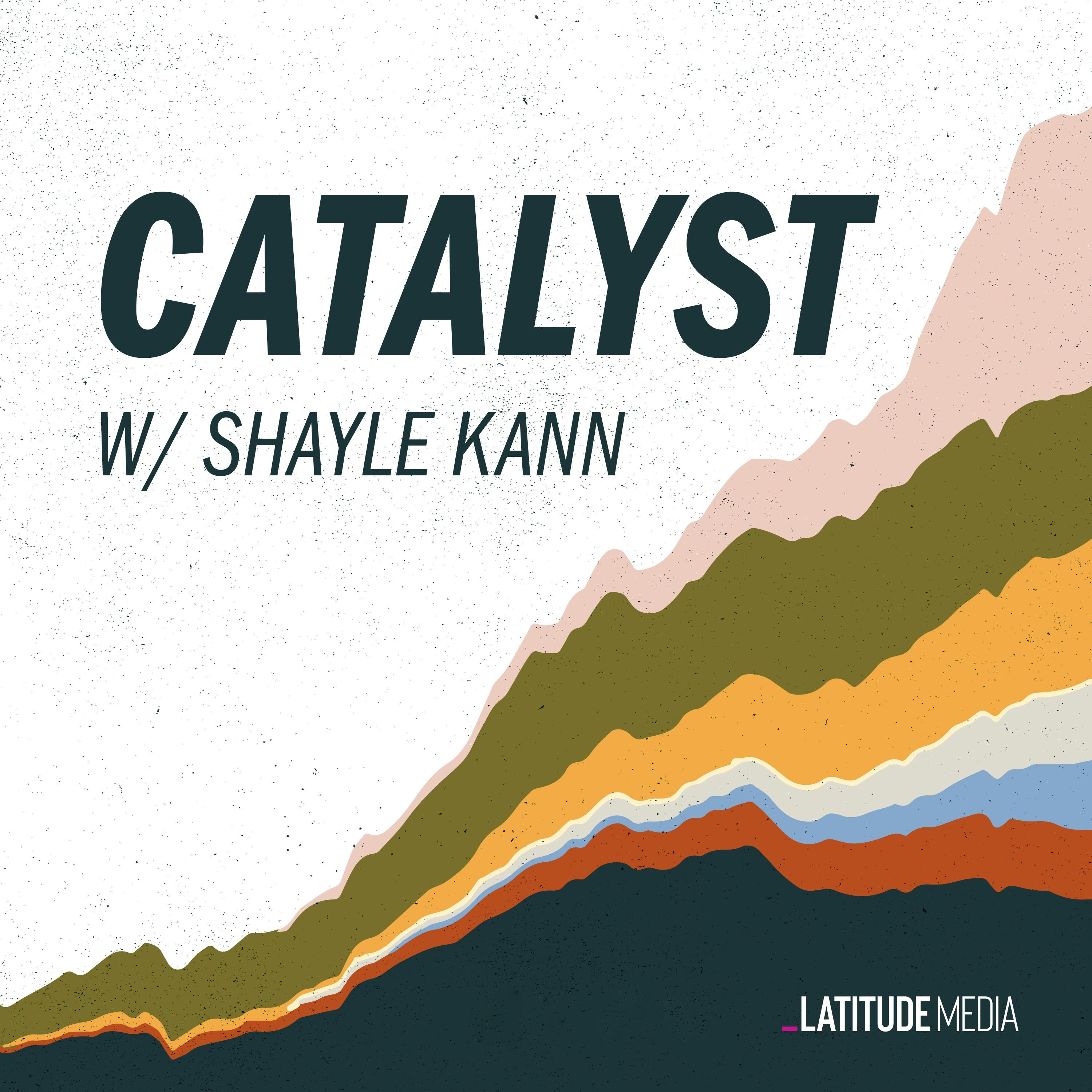

Catalyst with Shayle Kann
Latitude Media
Investor Shayle Kann is asking big questions about how to decarbonize the planet: How cheap can clean energy get? Will artificial intelligence speed up climate solutions? Where is the smart money going into climate technologies? Every week on Catalyst, Shayle explains the world of climate tech with prominent experts, investors, researchers, and executives. Produced by Latitude Media.
Episodes
Mentioned books

25 snips
Nov 9, 2023 • 53min
Mailbag episode! Interest rates, carbon dioxide removal, load growth, and more
Topics covered include load growth, impact of interest rates on climatetech, challenges of siting carbon dioxide pipelines, lack of clear winning technology for carbon dioxide removal, European energy companies acquiring US companies, bullishness on macro grid, and personal anecdotes about childhood fascination with rocks.

8 snips
Nov 3, 2023 • 1h 8min
The Volts crossover episode
In this podcast, Shayle Kann and David Roberts discuss underhyped and overhyped trends in climatetech. They cover topics like new wave of thermal storage technology, small modular reactors, rising interest rates, the Inflation Reduction Act, electric stovetops, mineral bottlenecks, and networked geothermal. They also mention the importance of tracking funding and express admiration for each other's work.

12 snips
Oct 26, 2023 • 45min
The market for microgrids
In this podcast, the host discusses the concept of microgrids and their components, including the challenges faced in the market. They explore the value of combining solar power with energy storage and the evolution of the microgrid market in response to regulatory changes. The use of fossil-based generators for resilience in microgrids is also discussed. The speakers express interest in exploring the economics and demand for microgrids in the future.

Oct 19, 2023 • 36min
The pace of home electrification
This podcast discusses the goal of having heat pumps in 140 million U.S. homes by 2050. It explores the adoption targets for water heaters, induction stoves, and other home appliances. The episode also covers the $9 billion in incentives that could accelerate adoption, the need for more data to speed up adoption, and the impact of heat pumps on the heating and cooling market. Additionally, it discusses progress and challenges in electrifying water heating, pricing and competition in the home electrification market, and the importance of product innovation.

6 snips
Oct 12, 2023 • 51min
How is U.S. industrial policy affecting actual climatetech investment?
This podcast explores the impact of U.S. industrial policies on climatetech investments. It covers sectors experiencing accelerated trends, catalyzed growth, and declining despite incentives. The discussion includes regional manufacturing investment clustering, the growth of blue hydrogen, and the influence of legislation on the EV supply chain and heat pump adoption.

Oct 11, 2023 • 15min
What electric forklifts teach us about creative policy [partner content]
Learn about the potential of electric forklifts in boosting electrification and grid management. Discover the advantages of electric forklifts and the impact of federal dollars on electrification technologies. Explore the role of utilities in promoting emission reduction programs and the potential of the Inflation Reduction Act in clean energy investments.

14 snips
Oct 5, 2023 • 49min
Climate tech startups need strong techno-economic analysis (TEA)
The podcast discusses the importance of techno-economic analysis (TEA) for evaluating climate tech startups. It highlights common mistakes in TEA models, such as unrealistic inputs and focusing on individual components instead of the entire system. The podcast also emphasizes the significance of accurate comparisons, competitiveness, and considering distribution and transport costs in energy technologies. Overall, techno-economic analysis plays a crucial role in determining the success factors for climate tech startups.

10 snips
Sep 28, 2023 • 40min
Reviving the stagnant plant based meat market
The podcast discusses the decline of plant-based meats after a successful period in 2020, exploring factors such as sales, inflation, and limited penetration. It compares the plant-based beverage category to plant-based meats and highlights positive growth potential in other markets. The episode also covers improvements in taste, health, and price that could revive the industry.

32 snips
Sep 21, 2023 • 42min
Fixing interconnection
The podcast discusses the challenges and costs of interconnecting electricity generators to the grid, with a focus on Texas. It explores the backlog of projects waiting to connect, recent reform efforts, and the concept of cluster studies. The interconnection process in ERCOT is explored, highlighting the use of generator curtailment and comparing it to the PJM electricity market. The relationship between generator curtailment and interconnection requests in Texas is examined. Finally, there is a discussion on proposing a two-step study process and reforming the impact threshold for assigning upgrades to energy generation resources.

9 snips
Sep 14, 2023 • 45min
Stopping geoengineering, by accident
Scientists discuss unintentional geoengineering caused by maritime shipping emissions, which brighten clouds and reflect solar radiation. Regulations to cut sulfur emissions unintentionally warmed the surface of the oceans. The podcast explores the mechanism behind marine cloud brightening, the impact on global temperatures, and the unintended consequences of International Maritime Organization regulations. It also highlights the need for global conversations about geoengineering and further research on regional effects.


